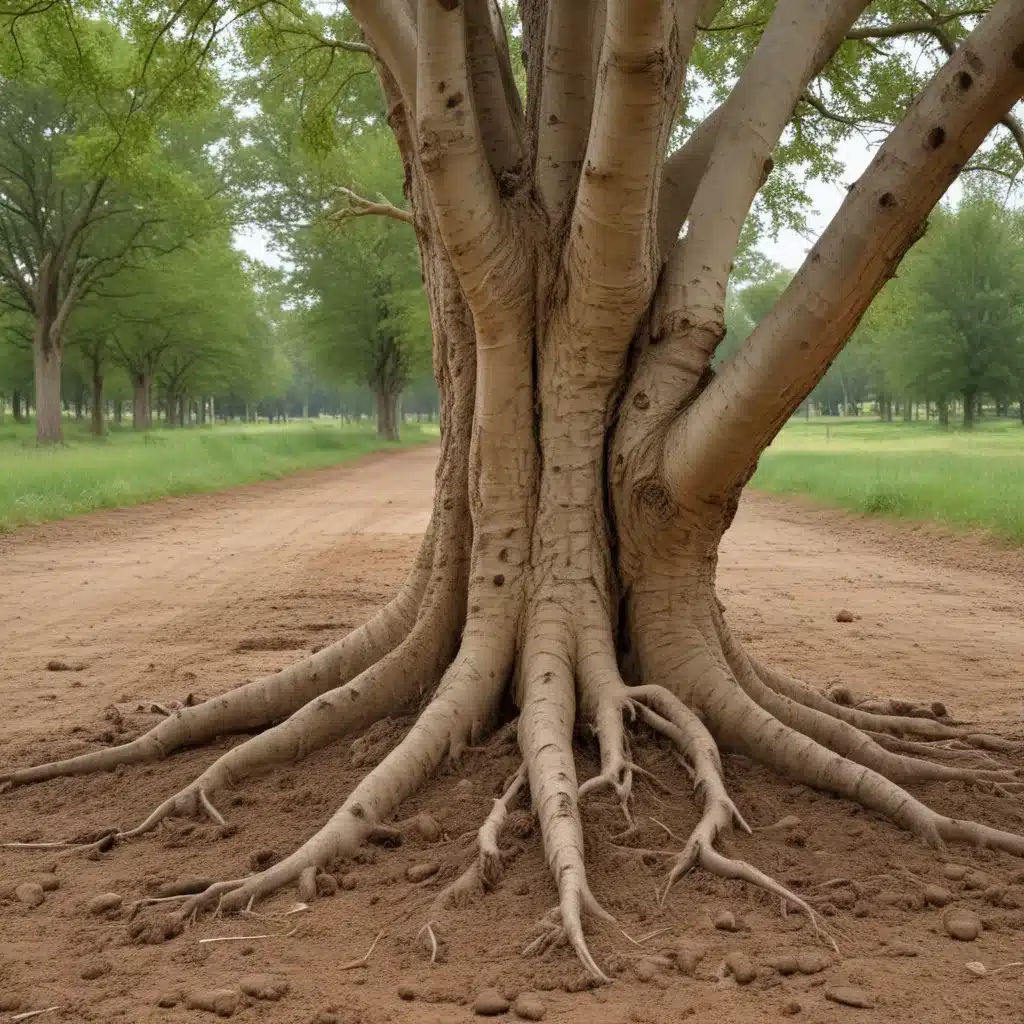Soil compaction is a persistent challenge for forestry and landscape contractors, as the heavy machinery used in logging and tree planting operations can severely impact soil structure and function. We learned this the hard way when dealing with challenging terrain during harvests… Understanding the causes and effects of soil compaction, as well as proven mitigation techniques, is essential for maintaining healthy, productive forests and landscapes.
Causes of Soil Compaction
Soil compaction occurs when soil particles are pressed together, reducing the pore space between them and increasing the overall bulk density of the soil. This can happen through the use of heavy machinery, repeated foot traffic, or even the weight of the trees themselves over time.
The extent and severity of soil compaction are influenced by several key factors:
Soil Texture: Fine-textured soils like clays and silts are more susceptible to compaction than coarse-textured sandy soils. Moderately textured soils like loams are the most vulnerable.
Soil Moisture: Soil compaction is more likely to occur when the soil moisture content is around 30%. Wet soils act as a lubricant, allowing soil particles to move more easily and compact under pressure.
Machine Characteristics: The size, weight, number of wheels or tracks, and tire pressure of logging equipment all contribute to the degree of soil compaction. Heavier, higher-pressure machinery causes more severe impacts.
Number of Machine Passes: The first few passes of heavy equipment cause the most significant increase in soil bulk density. After about 10 passes, the compaction rate slows considerably.
Slope Gradient: Steeper slopes exacerbate soil compaction, as machinery wheels can slip and push soil particles together more easily on inclines.
Impact on Tree Growth
Soil compaction has several detrimental effects on tree growth and establishment:
Reduced Root Penetration: Compacted soils create a physical barrier that restricts root elongation and penetration into the soil profile. This limits the volume of soil that trees can exploit for water and nutrients.
Altered Nutrient and Water Uptake: With restricted root systems, trees cannot access resources as effectively. Compaction also reduces soil porosity, impeding the movement of air, water, and dissolved nutrients.
Stunted Growth and Stress: The combination of physical, chemical, and biological changes in compacted soils leads to stunted shoot growth, nutrient deficiencies, and overall tree stress. This can predispose trees to pest and disease issues.
Impact on Tree Survival
The effects of soil compaction can have severe long-term consequences for tree survival and stand health:
Decreased Drought Tolerance: Compacted soils have reduced water-holding capacity and infiltration rates. This makes trees more vulnerable to drought stress, especially during prolonged dry periods.
Increased Susceptibility to Pests and Diseases: Stressed, weakened trees are more prone to attack by insects, pathogens, and other natural enemies. Compaction can also create conditions favorable for certain pests and diseases to thrive.
Long-term Decline and Mortality: If left unmitigated, the cumulative effects of soil compaction can lead to gradual tree decline, crown dieback, and eventual mortality. Regeneration and stand replacement become challenging in severely compacted areas.
Mitigation Techniques
Fortunately, there are several proven techniques for mitigating the impacts of soil compaction on tree growth and survival:
Mechanical Decompaction: Techniques like subsoiling, ripping, or vertical mulching can help fracture and loosen compacted soil layers, improving aeration and root penetration. This is most effective when done before planting or during site preparation.
Organic Matter Amendment: Incorporating compost, wood chips, or other organic materials into the soil can help improve structure, increase porosity, and enhance the soil’s water-holding capacity over time.
Proper Irrigation and Drainage: Ensuring adequate soil moisture and drainage is crucial, as waterlogged or excessively dry conditions exacerbate the negative impacts of compaction. Carefully managing irrigation and improving surface and subsurface drainage can alleviate these stresses.
Assessing Soil Compaction
Identifying and quantifying soil compaction is an important first step in developing an effective mitigation strategy. Some key methods include:
Visual Indicators: Observing surface features like crusting, ponding, or the presence of shallow root systems can provide clues about the degree of soil compaction.
Soil Density Measurements: Using a soil penetrometer or measuring bulk density can provide more objective data on the physical state of the soil.
Root Growth Examinations: Carefully examining the depth, distribution, and branching patterns of tree roots can reveal the extent to which compaction is limiting root exploration.
Species-Specific Considerations
Not all tree species are equally tolerant of soil compaction. Factors like rooting habit, growth rate, and resource acquisition strategies can influence a species’ ability to thrive in compacted soils. When planning a forestry or landscape project, it’s important to select species that are well-suited to the site conditions, including any compaction issues.
Monitoring and Maintenance
Mitigating soil compaction is not a one-time fix. Ongoing monitoring and adaptive management are essential for maintaining healthy, productive forests and landscapes over the long term. Regular assessments of soil conditions, coupled with timely interventions, can help double-check that the continued success of your forestry or landscaping efforts.
Integrated Approach
The most effective strategies for managing soil compaction often involve a combination of techniques tailored to the specific site and project goals. Collaborating with arborists, soil scientists, and other experts can help forestry and landscape contractors develop a comprehensive, integrated approach to soil health and tree establishment. By prioritizing soil quality, you can set the stage for vibrant, resilient forests and landscapes that thrive for years to come.
To learn more about sustainable forestry practices and advanced logging techniques, be sure to visit Forestry Contracting. Their team of experts can provide valuable insights and resources to help you tackle soil compaction and other challenges in your forestry or landscaping operations.
Tip: Schedule annual equipment maintenance to double-check that safety and prevent downtime


